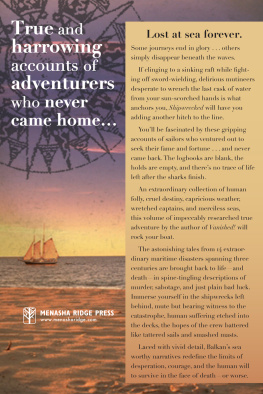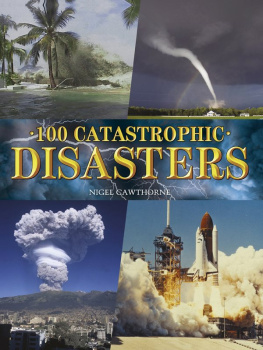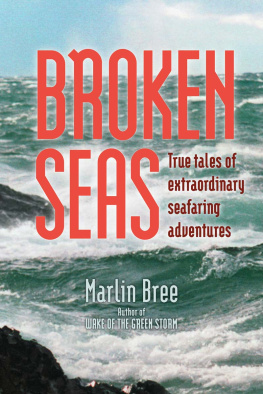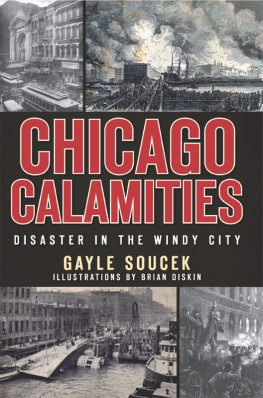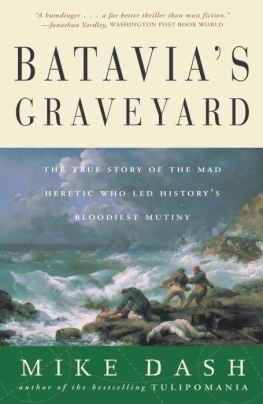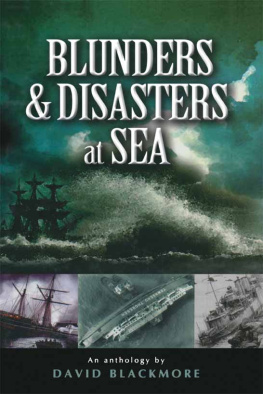

Copyright 2008 by Evan Balkan
All rights reserved
Published by Menasha Ridge Press
Printed in the United States of America
Distributed by Publishers Group West
First edition, first printing
Library of Congress Cataloging-in-Publication Data
Balkan, Evan, 1972
Shipwrecked! : deadly adventures and disasters at sea / by Evan Balkan.
1st ed.
p. cm. (Dying to explore series)
Includes bibliographical references and index.
ISBN-13: 978-0-89732-653-7
ISBN-10: 0-89732-653-9
1. Shipwrecks. 2. Adventure and adventurers. I. Title.
G525.B256 2008
910.452dc22
2008026581
Text and cover design by Travis Bryant
Cover photo by Rick Rusing/VEER
Indexing by Cindy Coan
Menasha Ridge Press
P.O. Box 43673
Birmingham, Alabama 35243
www.menasharidge.com

TABLE OF CONTENTS
Dedicated to the memory of John Robert Harrington, who knew some ripping good yarns.

About the Author
Evan Balkan teaches writing at the Community College of Baltimore County. His fiction and nonfiction, mostly in the areas of travel and outdoor recreation, have been published throughout the United States, as well as in Canada, England, and Australia. A graduate of Towson, George Mason, and Johns Hopkins universities, he is also the author of Vanished! Explorers Forever Lost, 60 Hikes within 60 Miles: Baltimore, and Best in Tent Camping: Maryland (all published by Menasha Ridge Press). He lives in Lutherville, Maryland, with his wife, Shelly, and daughters, Amelia and Molly.

Preface
Since human beings first lashed together the trunks and branches of trees, tested their buoyancy on a body of water, set a tentative foot on the result and pushed off, there have been great rewards. And great dangers. The only way to ensure a safe voyage was to remain in port.
But that doesnt speak to the imagination. There were whole worlds out there, after alland they screamed for exploration. There were food sources, too. And new lands to conquer. There was money to be made. What stood between this shore and the next was a limitless swelling wilderness of water. We can imagine early humans cupping their hands to their eyes and staring out over that vast swell, scared of what lived within but pulled nevertheless by what lay beyond.
As the centuries passed, humans became especially adept at creating efficient vessels. From the tiniest kayak carrying the solitary hunter to do battle with a whale, to the floating cities that carry goods all over the worldthe earths major waterways are pocked with boats. But all the carriers on the planet congregated in one ocean would barely make a dent in its vastness. Indeed, if the ship fails, theres hardly a more helpless feeling. But when the vessel begins to sink, often that is only the beginning of the story.
Through the last half of the second millennium, the printed word allowed dissemination of incredible tales of shipwreck and their aftermath. Not surprisingly, there was a great hunger for such stories. They were so dramatic as to be almost unbelievable. Todays modes of concentrated conveyance also sometimes give us tragedy, of course. And their calamity is no less severe. But todays air crashes, for example, are more efficient, leaving little chance for escape. When the hold of yesterdays ship began to crack and the saltwater made its way inside, the responses were as varied as the wide spectrum of human emotions. There were bravery and heroism, cowardice and incivility.
But universally, there was horror. The Calcutta lawyer and memoirist William Hickey wrote in 1810, Death by shipwreck is the most terrible of deaths... In a storm at sea, in a miserable cabin on a filthy wet bed where it is as impossible to think as to breathe freely, the fatigue, the motion, the want of rest and food, give a kind of hysteric sensibility to the frame, which makes it alive to the slightest danger. If we look round at the miserable group that surround us, no eye beams comfort, no tongue speaks consolation, and when we throw our imagination beyondto the death-like darkness, the howling blast, the raging and merciless elementsurely, surely it is the most terrible of deaths!
This book presents fifteen such tales of the raging and merciless element, spanning the end of the seventeenth century to the beginning of the twentieth, and covering almost every corner of the world.

A note about the organization of this book: Shipwrecked was a difficult book to write. That is because as I was researching one wreck, there would inevitably be a reference to another, even more interesting wreck story. This happened so many times that I had to check myself from writing a 10,000-page work covering all the drama of the sea. There are simply too many incredible stories.
Eventually, I settled on the fifteen youll see here. I grouped them by theme, providing an organizing principle that allowed me some control over the material lest I lose myself once again to all the astonishing drama. Working within a particular frame proved to be something of a check against that impulse. In the end, I settled on five themes, placing three wrecks within each. The five themes are: The Custom of the Sea (Cannibalism); Conflicting Accounts; Incompetence, Disorder, and Evil; On Foreign Shores; and Extraordinary Survival.
No doubt the reader will notice quite a bit of overlap among these categories. For example, the wreck of the Stirling Castle off the coast of Australia in 1836 could have logically gone into the On Foreign Shores chapter; there are also hints of cannibalism in that amazing story. However, it is the variation in the accounts of the wreck that makes it resonate even today. Further, the other two wrecks in the Conflicting Accounts chapter (the Nottingham Galley and the Francis Mary) have tales of cannibalism; however, I reserved the three wrecks in the Cannibalism chapter for those stories that involved the Custom of the Sea, or the drawing of lots to see who would be killed and then eaten by desperate shipmates. As you will see, its an important distinctionone that made all the difference to friends and relatives of the shipwreck survivors who were reduced to eating their shipmates to survive. These three tales include the wrecks of the Peggy, the Essex (inspiration for Herman Melvilles Moby-Dick), and the Mignonette.
The wrecks in the On Foreign Shores chapter include those incredible tales of wide-eyed and often grossly misinformed Europeans finding themselves in lands where images of mythical monsters, animalsand savage peopledominated. There were places often represented on maps by fabulous beasts, and human beings only a rung or two above. For an uninformed European, the prospects were terrifying. And the results were astonishing. Here we have three tales of cultural misunderstanding and hostility, slavery, and even assimilation: these are the wrecks of the
Next page
